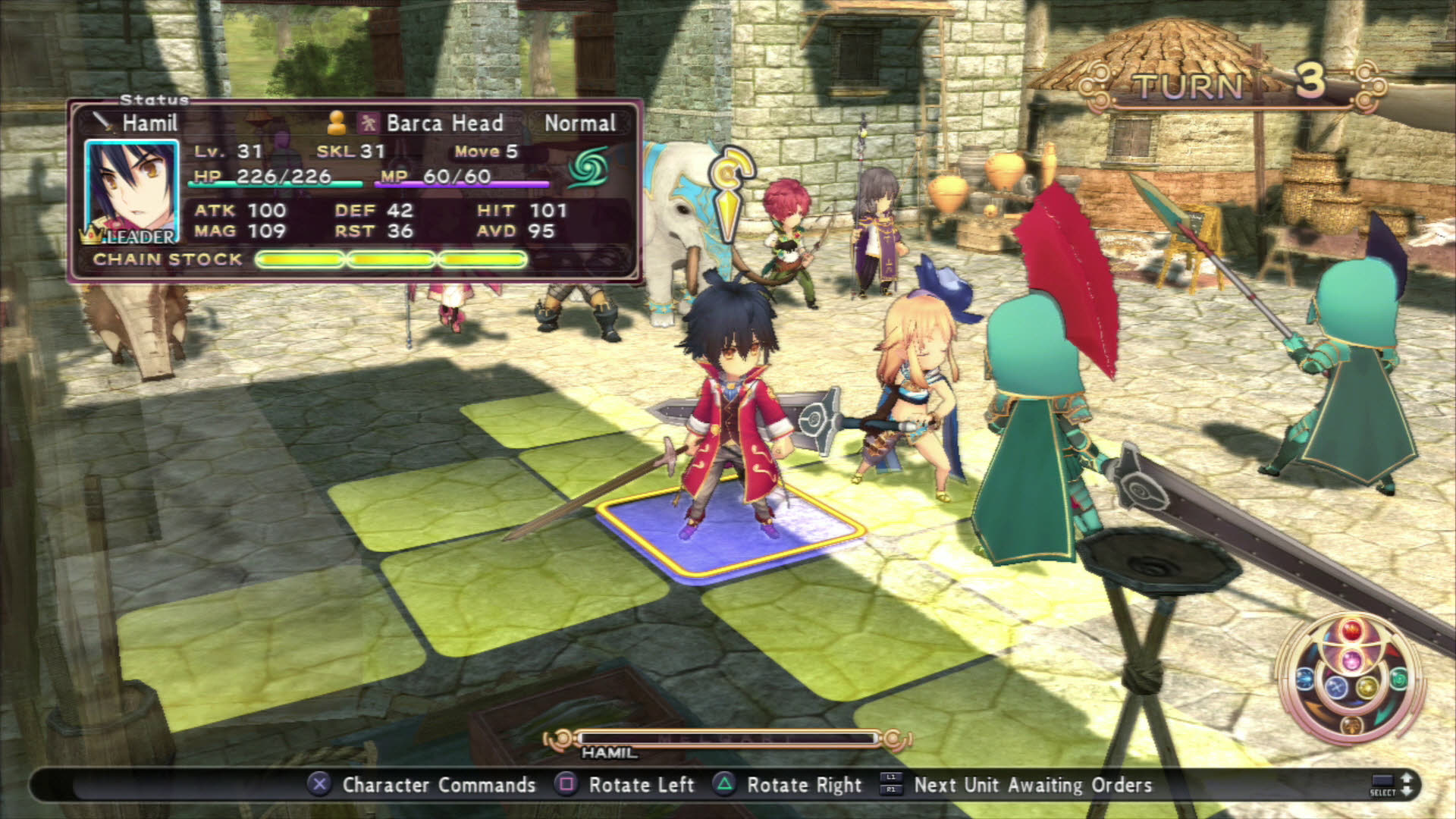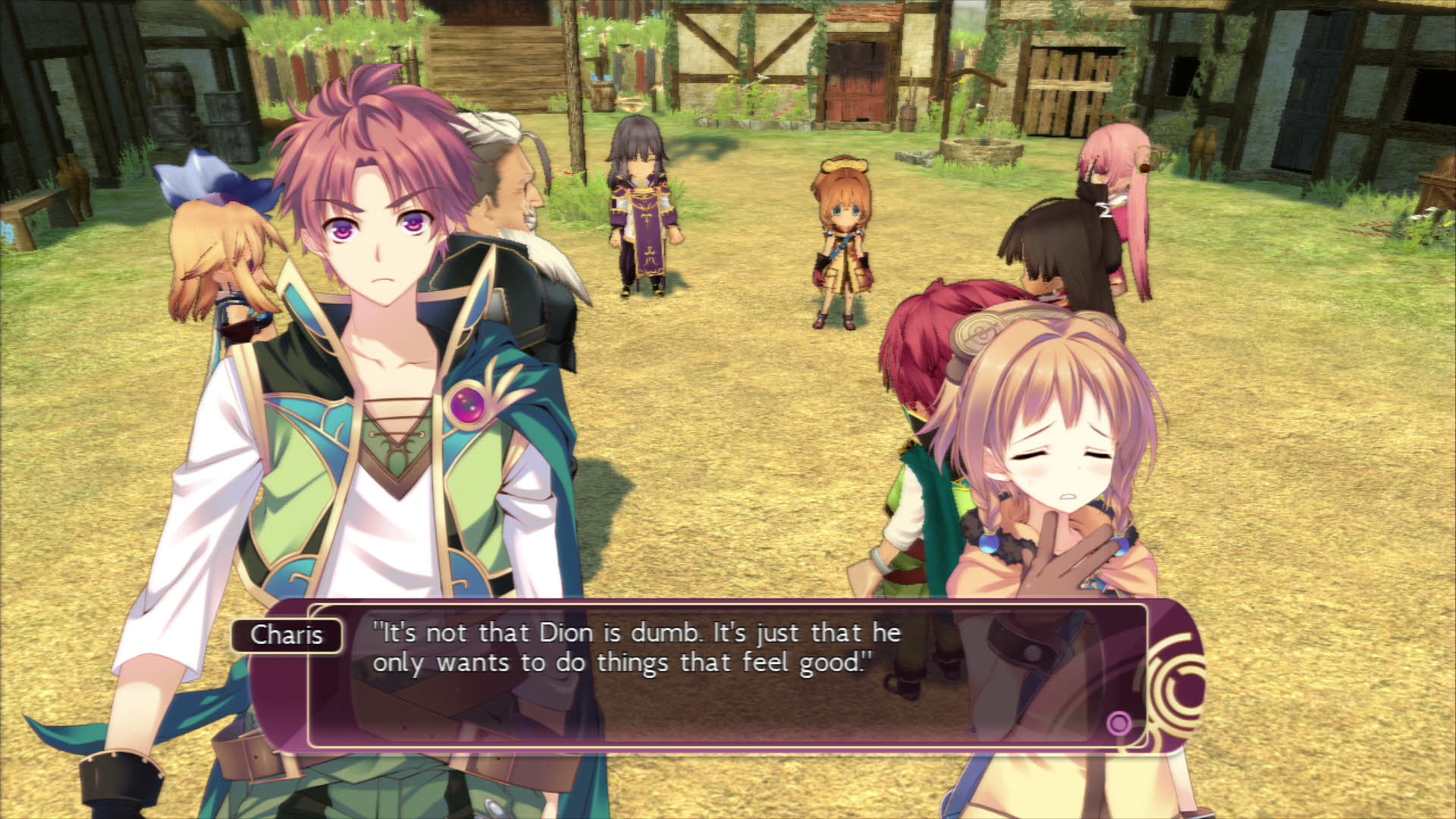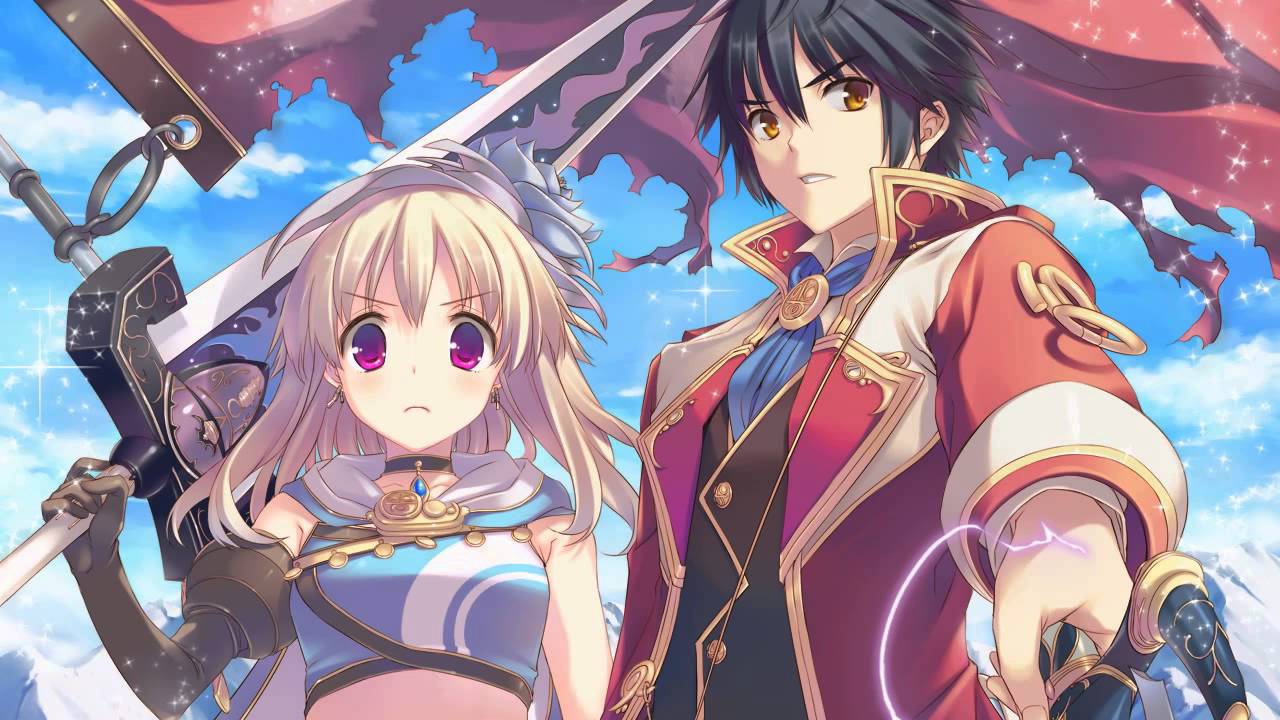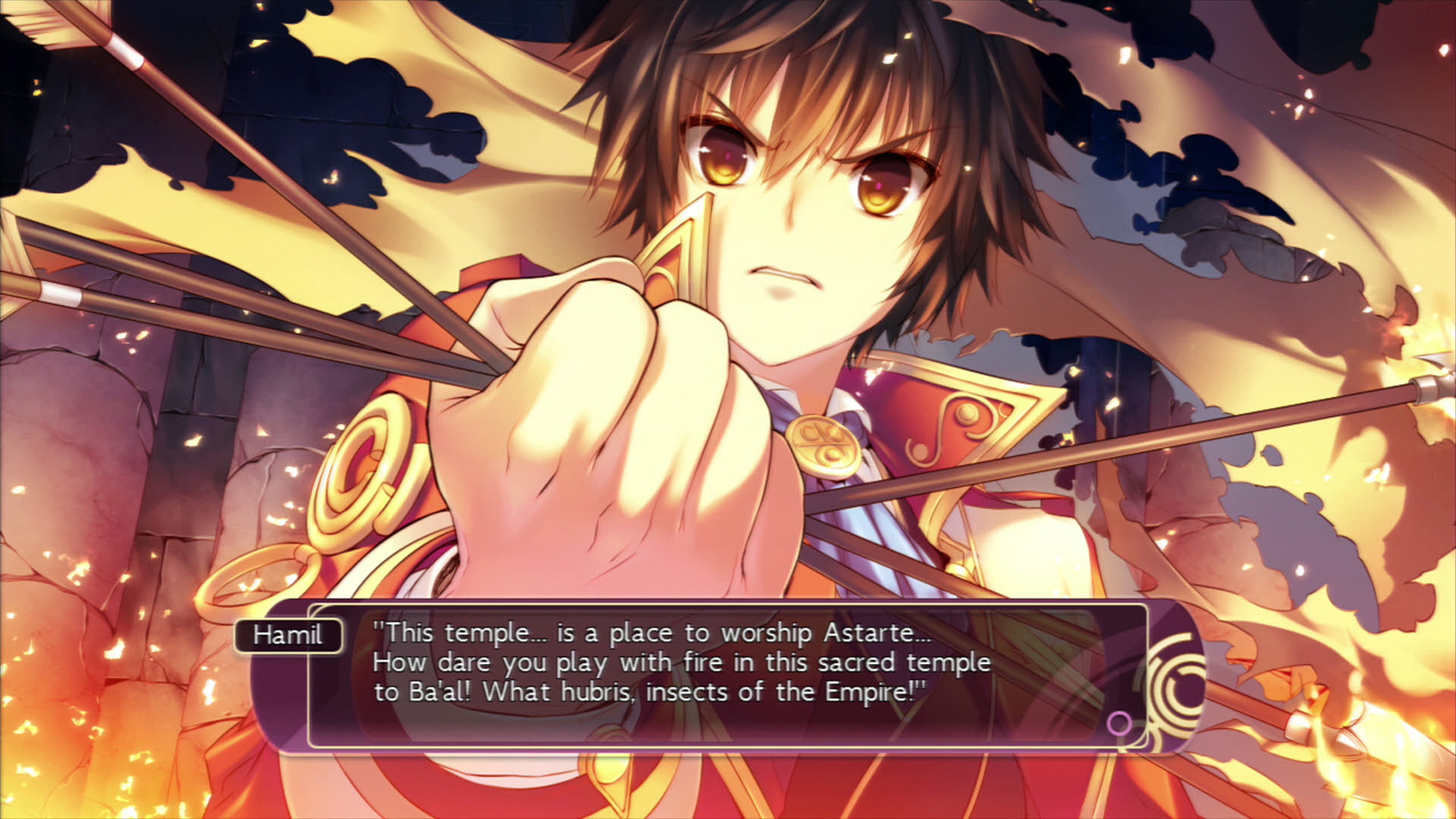Search
[{{{type}}}] {{{reason}}}
{{/data.error.root_cause}}{{{_source.title}}} {{#_source.showPrice}} {{{_source.displayPrice}}} {{/_source.showPrice}}
{{#_source.showLink}} {{/_source.showLink}} {{#_source.showDate}}{{{_source.displayDate}}}
{{/_source.showDate}}{{{_source.description}}}
{{#_source.additionalInfo}}{{#_source.additionalFields}} {{#title}} {{{label}}}: {{{title}}} {{/title}} {{/_source.additionalFields}}
{{/_source.additionalInfo}}- Details
- Category: PlayStation 3
- By Jason Gress
- Hits: 11159
Tears to Tiara II: Heir of the Overlord (PS3)

Tears to Tiara II: Heir of the Overlord
Developed By: AQUAPLUS
Published By: Atlus
Release Date: October 14, 2014
Available On: PS3
Genre: Visual Novel/SRPG|
Number of Players: 1
ESRB Rating: Teen for Blood, Fantasy Violence, Language, Suggestive Themes, Use of Alcohol, Use of Tobacco
MSRP: $39.99
(Amazon Affiliate Link)
Thank you Atlus for sending us this game to review!
Tears to Tiara II: Heir of the Overlord is the second game in the series, but is the first one to hit our shores. That was a PC game (which contains erotic material, so please don't look for it), which was later remade for PlayStation 3 with the erotic material removed, but it never left Japan. This second game is it's own independent story, and does not require having played the first, though I did see some of the connections when I went back and read about it more later.
You follow Hamilcar Barca, usually called Hamil, and his goddess Astarte, usually called Tarte, and their band of friends as they throw off the oppressive Divine Empire and take back Hispania from their evil rule. While at first glance it may seem cliché, it really is not – this game is loosely based on the historical figure of Hamilcar Barca and his son, Hannibal, though some say that Hamil's in-game events more closely resemble Hannibal's life than his father's. Another switcheroo is that Hamil's father's name is Hasdrubal in the game, while history shows that name to match another of Hamilcar's sons. Regardless of this, it allows the game to have a deep, deep lore to draw from to fill out the game's events and storyline – and that it does with aplomb.
And it takes plenty of time to develop the incredibly engrossing storyline. Tears is what they call a Visual Novel, which is to say that much of the game is really sitting through reading and watching the story unfold in a non-interactive manner. While this may sound boring, and if you did not expect it, you might be a bit surprised (the PR from Atlus took special pain to make sure that reviewers understood this going in) and disappointed – if I expected a typical strategy role-playing game (SRPG), I would have been quite upset that I had to wait over two hours before the first battle, and over five hours before getting to the world map. But they did such a great job telling this story, that I am glad I waited it out.
This game really has two primary modes, along with an overworld map, which is accessible after the second chapter or so. First, and primarily, is the cut scenes. These are primarily rendered in engine, with text boxes and character portraits. The portraits change based on the person's expression, and they are constantly swapped out as conversations continue. The chibi-style 3D rendered sprites also move a bit to further enhance the storytelling. Playing this game is, in many ways, like watching an interactive anime, or reading an interactive book (hence Visual Novel). It does follow many anime tropes, like the tsundere (hot-headed but soft hearted female, for those not up on anime lingo) heroine, the kawaii (extremely cute) girl, and the very attractive cross dresser. Incidentally, it also in no way underplays a woman's power as a warrior – they more than hold their own in a fight, both in your party, and during storyline sequences. Also, like many anime, there are at least a couple women who show off far too much skin.

Strong Points: Incredibly engaging storyline; very likeable characters; long, engrossing 80+ hour adventure; excellent music and (Japanese) voice overs; fantastic translation; loosely based on real history
Weak Points: Very long cut scenes if you aren't prepared for it; all voice acting is in Japanese except for the Bonus Scenario, which has none
Moral Warnings: Violence and blood, including a few rather dramatic scenes; occasional PG-13 language, like h*ll, b*stard, b*tch, sh*t, d*mn; some alcohol and tobacco use, especially one character in particular; Some female characters regularly show significant skin, with one in particular showing a lot of cleavage, with another showing midriffs throughout; heavy themes of polytheism, some pantheism, some atheism, and the heroes are fighting against an established religion that seems awfully similar to Catholicism; Lucifer is considered a good guy; contains a few hexagrams
The cast of characters is quite extensive, and the game does a fabulous job endearing the player to almost all of them. There is Hamil, who is a fantastic leader. He shows his strengths, weaknesses, and his human side. They did a great job making him a complex character you grow to love. His goddess, Tarte, is a lovable tsundere who always encourages people to worship her, while bringing out the best in Hamil. Dion is a goofball, whose sole goal in life is to figure out how to become popular with the ladies. Monomachus and Enneads are formers servants of Hamil's father, Hasdrubal, and are leaders of the Barca Faction, the secret organization working against the empire whose sole purpose is to revive the glory days of Hispania and the Barca family. There are many more characters I could introduce you to – and there are many – but suffice it to say, other than a few late-comers like Golyat, each character is fleshed out in a way that you quickly come to love all of them.
The other aspect of the game is the SRPG combat. Each character has a different class, weapon type, and strengths and weaknesses. Warriors have attacks and techniques, magic users have attacks and spells, and some unit types have both techniques and spells. Magic and techniques cost magic points, and some skills also cost chain stocks. Chain stocks are built up during battle, and can be used in a few ways. The most common way is to press a button while attacking, which allows you to get a second attack in. Later in the game, as you get more chain stocks, you can actually do this repeatedly, and get in 2-5 attacks in at once. However, skills that require chain stocks to cast are usually a much more effective way to use them because they are often very powerful, or do damage to an area.
The battle area is arranged in a grid, with various obstacles in the way. A few characters can float, and actually fly over some obstacles, but most cannot. Every attack has a range, and an area of effect. Most melee warriors, for instance, have at least one technique that strikes more than one range, which can be great for avoiding counterattacks. There are also leadership skills, as well as skills that characters learn through leveling up, or by reading skill books, which uses them up. Books can be found, purchased, or crafted. A few skills, like double action or forbid counters, can be game changing. Forbid counters does what it sounds like, but double action allows you to attack twice if you don't move first. This can really make a huge difference if you saved up the necessary MP or CS to unleash two incredibly powerful attacks.
A couple of characters, namely Hamil and Tarte, can unleash alternate forms, which are very powerful. You see, Hamil was cursed by Melqart's sword, and has a demon living inside of him as a result. He made a pact with this demon, where he promised him the blood of his enemies, and in exchange, he will allow Hamil to summon him at will. Tarte is a goddess, so she can channel her 'older sister' Tanit, and when summoned, is also considerably more powerful. These abilities are temporary, and can only be summoned when a meter at the bottom is filled up, based on various factors like how many attacks, deaths, and other things have happened in the battle so far. After summoning their alter egos, they only have two turns to enjoy their altered state, and then they have one turn of cooldown where they are very weak and vulnerable. But, with proper planning, it can completely turn the tide of battle. Melqart, in particular, can sometimes wipe out a boss by himself, and with proper planning, double action and a technique called Eternal Return can send many bosses to, well, their eternal return.

Higher is better
(10/10 is perfect)
Game Score - 90%
Gameplay - 18/20
Graphics - 7/10
Sound - 10/10
Stability - 5/5
Controls - 5/5
Morality Score - 63%
Violence - 4.5/10
Language - 3/10
Sexual Content - 5/10
Occult/Supernatural - 6/10
Cultural/Moral/Ethical - 10/10
Bonus Points: +3 for showing great examples of friendship and self sacrifice
There is also a map view, where you can do any necessary training or grinding if you wish, along with a base where you can purchase new equipment, items, or craft upgrades to your existing equipment. The 'game' side is a very solid strategy RPG, and also a very good challenge. The game allows you to rewind to the beginning of any turn, in case things don't go your way. Any turn taken the exact same way, will have the same results, but switching the order of things can sometimes change the results, and of course doing different things can as well. It's very interesting, and fun for those of us who try to do things perfectly. But get too perfect and you will pull your hair out – aiming for S ranks, which requires getting all objectives, bonus objectives, using few items, and having no overleveled characters – that is a challenge, and I ended up giving up on that goal if I ever wanted to complete this game in a reasonable timeframe.
And even still, this game took me well over eighty hours to complete. I started the Bonus Scenario, but decided that I simply couldn't afford another ten plus hours at this time – not that I didn't want to. It is fun, but I got the most out of the storyline, and the battles, while entertaining, are very challenging and can become frustrating. On top of all of that, there is a New Game+ mode, so you can carry over all of the equipment you earned on the first playthrough if you want to do it again. You can certainly get your money's worth here.
And the quality of the experience is fairly good. The graphics are nothing special, though they do the job well enough. The music, sound effects, and voices are fantastic. No two ways about it – I had my kids (who I couldn't let watch me play too often... more on that soon) asking me for the game music CDs from this game. It is that good; I agree with them – I want the music too!
Given that the graphics are anime-like, and the battles are fantasy violence, it may not be immediately obvious why this game would not be safe for kids or teenagers. But the more you play, the more obvious it becomes that this game deals with a lot of mature topics, and really requires discernment to handle properly.

First of all, there are the surface issues. Blood, while not a common occurrence, when it does appear, is rather intense. It is not gory, but one character offers their bloody arm to another to try to appease Melqart's bloodlust (and it is not figurative – he really does want to drink blood.) Another time, there is a rather dramatic and emotional death that involves lots of blood everywhere. Alcohol and tobacco is used by a few characters. There are PG-13 curse words used, like h*ll, b*stard, b*tch, sh*t, and d*mn. There are also a few hexagrams found, though no pentagrams thankfully. One lady Izebel has massive cleavage and very short skirts, while another, the goddess Tarte, has bare midriff syndrome – and she's a melee tank. I guess being a goddess must give her skin of steel.
Occasionally, the characters will find themselves in a compromising or 'humorous' situation. One time, they were traveling through a tropical forest, and several suggested that they strip a bit to handle the weather better. As it happened, your character (Hamil) accidently stumbled onto Kleito (a dragon goddess) changing. Now, she has a trickster side to her, so she orders him, as a goddess, to put himself into a compromising situation. Of course, Tarte, who at this point won't admit that she likes Hamil but does, catches him, and 'hilarity ensues'.
While this is the only situation of this nature exactly, there are several other scenes with characters in odd situations meant to garner a laugh. Kleito one time seemed like she was making a 'move' on Charis – a twelve year old girl. I don't want to make it out like Kleito is some crazy evil sex fiend – she is not, and 90% of the time she is respectful, patient, and generally a good character, but once in a while they show a different side to her, where she tries to stir the pot a bit in strange ways.
And of course, there is the case of Daphnis. This is a rather strange case, where Elissa, a noble's daughter, is given at a young age by her father a young boy as a bodyguard who he dressed in girl clothes so that they could stay together all the time. As Elissa and Daphinis go to join Hamil on his quest, they find themselves in a perilous situation, where Elissa expressed her love to Daphnis, and he seems to reciprocate. But it soon seems like their definitions of love may be different, as Daphnis soon makes strange statements talking about 'my type', and always in reference to other guys... This is one of several running gags with him, especially with Elissa's reaction to follow. Some of the girls find him more feminine than they are. One time he actually wears men's clothes, and they say 'hey no crossdressing' - and he reminds them that he is actually a man... Oh and it was an awkward moment when one of my kids walked in and asked 'what is a boy in drag?' since that is his class type name.

And then there is the brunt of many jokes, Dion. He is actually a likeable character, despite being a pretty big coward for much of the game, though he does grow and develop into someone at least a little bit more mature. He always seeks out the ladies, and keeps striking out. More than once, he doubts that Daphnis could really actually be a man and wants to find out... he says that if he's that cute, maybe he should try dating him anyway? Is it really that important that 'his first' be a girl? He does eventually snap out of it. While far from common, there is enough sexual humor that this is definitely not an experience for a younger audience. On the plus side, outside of a picture if a lady's bare back, a bit of 'side cleavage' in one shot, and the aforementioned Izebel cleavage and really short skirts, nothing else is really shown.
And that really only scratches the surface. What really sets this game apart is the story, and much of it would really give pause to many used to western monotheistic ideas. The main character came from a family of the Canaanites, in a long line of Ba'al worshipers. For anyone who knows their Biblical history, that alone should give you pause. It's not quite as bad as it sounds in some ways, but in others perhaps worse.
The principle enemy is the Divine Empire, whose trappings seem suspiciously similar to the Catholic Church in many ways. This Empire talks often about sin, judgment, heaven and hell. There is also talk of a Divine Scriptures, and a leader called a Pontiff. The Divine Order worships a God (yes, the game uses a capital G for him, but not for other gods/goddesses) named Watos.
*** Massive Spoiler Alert ***
This Watos, whose existence is questioned at certain points in the game by the very founder of the Divine Order himself, was trying to kill humanity, and they were saved by an angel called Arawn, whose other name is Lucifer. So Lucifer is pitted as a good guy, and he rebelled against the other angels, trying to protect humanity from destruction by Watos. The Ba'al tribe was a group of an older race called the Elves, and that tribe worshiped Watos very faithfully. After they decided to help the rebellion to save themselves and the humans, they taught the very young human race basic life skills and the young humans worshiped them as gods. They initially resisted, but Lucifer encouraged them to accept it. Like the Elves, the Dragons were also an ancient race, also called gods by the humans. The end climaxes with you trying to defeat the very machine Watos himself sent to destroy the human race.
*** End Massive Spoilers ***
The gods of Ba'al are shown as the good guys, with free will and tolerance as prime traits, while the Divine Empire and its Supreme God is shown as intolerant, discouraging independent thought and education, and generally really bad guys.
On the flipside, Hamil bucks the trend of his ancenstors, and decides to avoid the pure warlord path, and tries very hard to save the lives of innocent people as much as possible, even at the cost of great personal hardship. He is a great example of self sacrifice, and inspires the very best in others. Hamil is a wonderful leader indeed.
Tears to Tiara II: Heir of the Overlord ended up being absolutely nothing like what I expected going in. We have a very richly detailed and interesting world, with lovable characters, buttressed by a solid SRPG gaming experience, filled with mature and difficult philosophical and theological questions that are not for anyone who is not theologically grounded. This game could help the reader/player ask questions that could lead them to take an atheistic or contrarian perspective for the easily influenced or unstable follower. For those willing to tolerate the downsides mentioned above, and in my opinion an adult player only, there is a deeply satisfying storyline contained herein that can inspire very deep thoughts – it's not everyday that we get to put on the hat of the other side of the polytheist/monotheist divide and see things from a little bit different point of view. And on top of that, I learned something about history. This game was extremely memorable for me, and I won't forget it for quite a while. But you better set aside a minimum of about two hours per play session, because it's very difficult to play for much less than that in one sitting.








